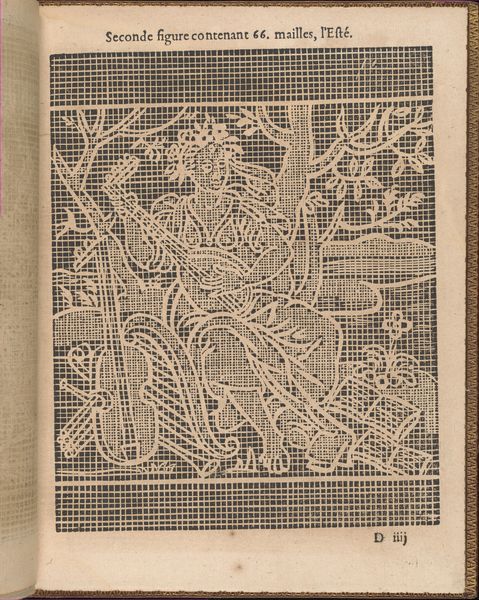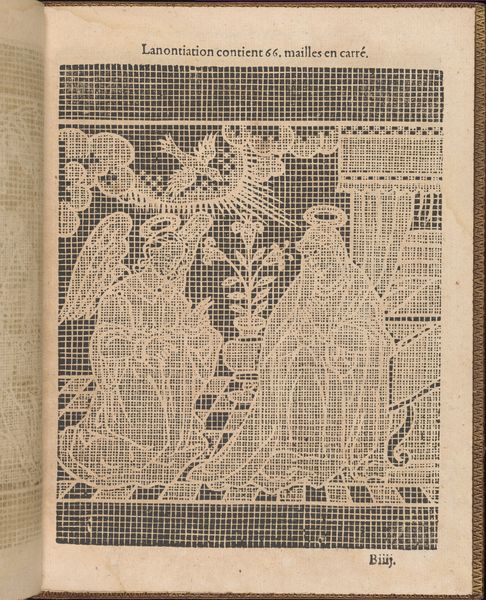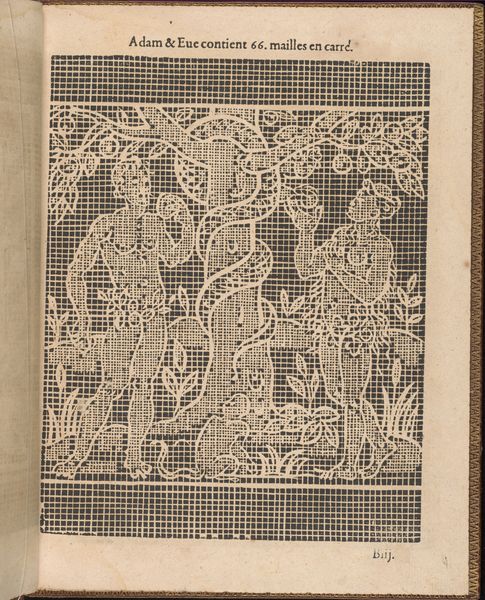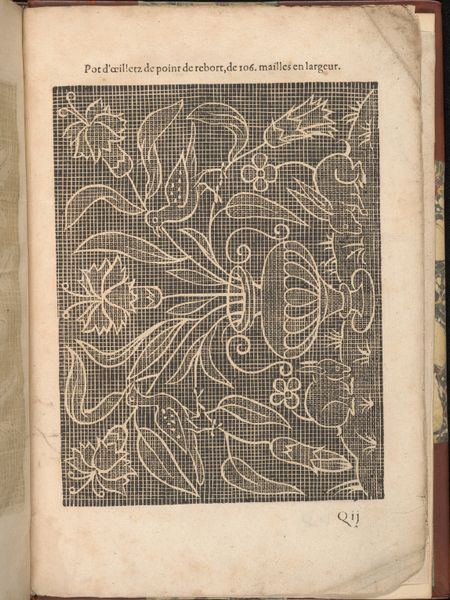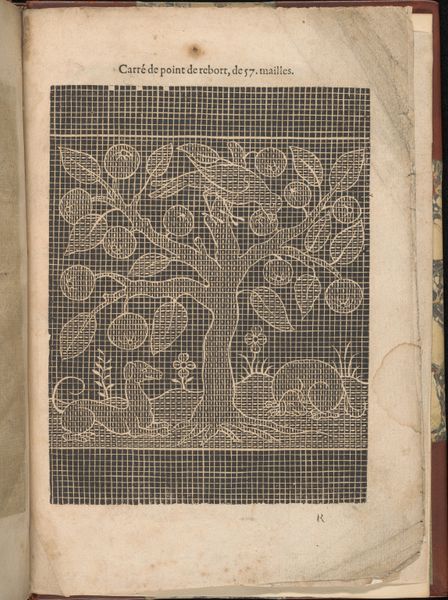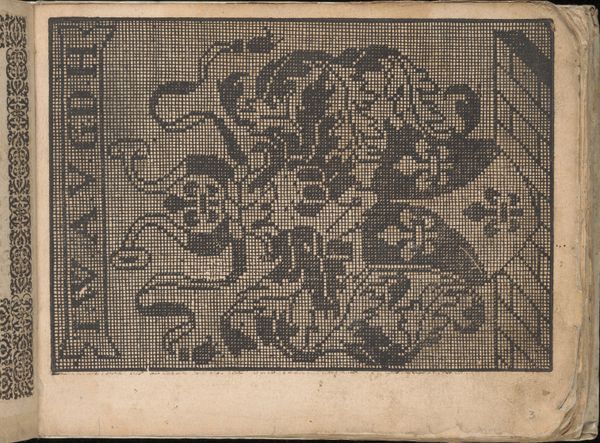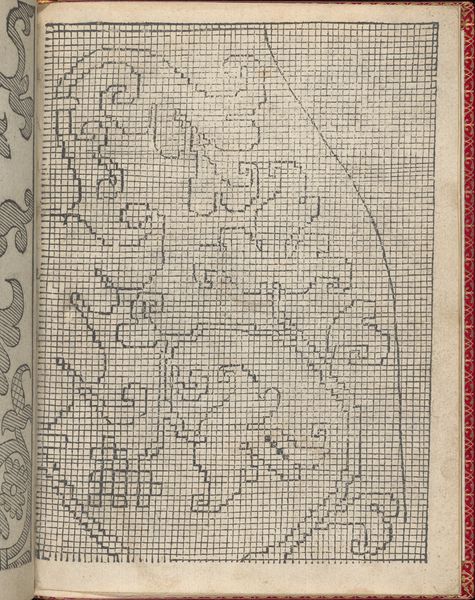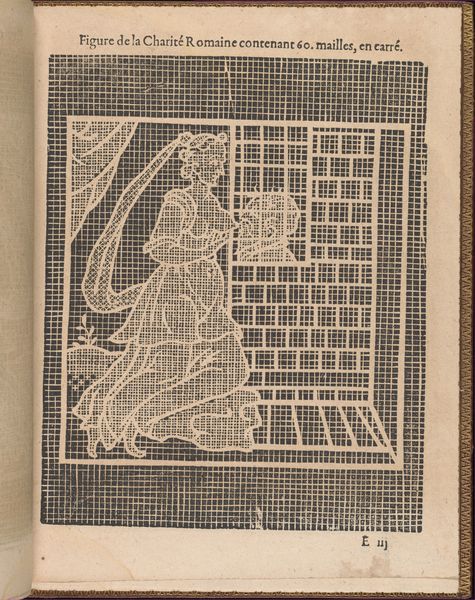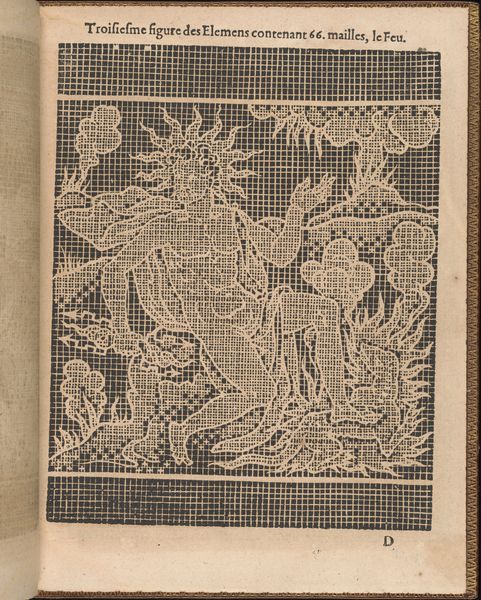
drawing, print, engraving
#
drawing
#
medieval
# print
#
engraving
Dimensions: Overall: 9 1/4 x 7 1/16 in. (23.5 x 18 cm)
Copyright: Public Domain
Curator: What a striking image—so graphic, yet so delicate! Editor: Indeed. This is "La Pratique de l'Aiguille, page 10 (recto)," a print by Matthias Mignerak dating back to 1605. Currently it resides in the Metropolitan Museum of Art. This engraving provides a pattern, "La Madeleine contient 66. mailles en carre," clearly intended for needlework. The whole practice seems geared toward wealthy women. Curator: Wealthy women being consumers of needlework patterns isn't that surprising, is it? What's more interesting to me is the actual making. Looking at it closely, I wonder about the labor involved, translating this into a stitched piece. How did they manage the material transformation? It feels intensely manual. Editor: That’s fascinating! It also strikes me how depictions of Mary Magdalene were often linked to ideas about penitence and female sexuality during the early 17th century. Embedding it within the domestic sphere speaks volumes. Was embroidery seen as a mode of redemption for women through piety? Curator: Certainly! The convergence of artistic and functional work provides ample food for thought. In the past, works like this have often been deemed 'minor art', but observing its materiality challenges this notion. We have to consider its social worth! Editor: I concur. Consider also who had access to such things! By exploring depictions like this we start talking about social class and expectations of both gender and class. I do wonder about the skill required to execute these patterns though—skills perhaps dismissed for a long time. Curator: Dismissal seems to be its main currency! It's a reminder for all of us to acknowledge labor in the 'Art' with a capital "A" that is so prized today, as we often undervalue such work due to gender biases, class boundaries, or any art considered domestic work! Editor: Right. Mignerak's detailed work asks us to reassess historical hierarchies, allowing new voices in art history and visual culture to step forward and rewrite assumptions.
Comments
No comments
Be the first to comment and join the conversation on the ultimate creative platform.
